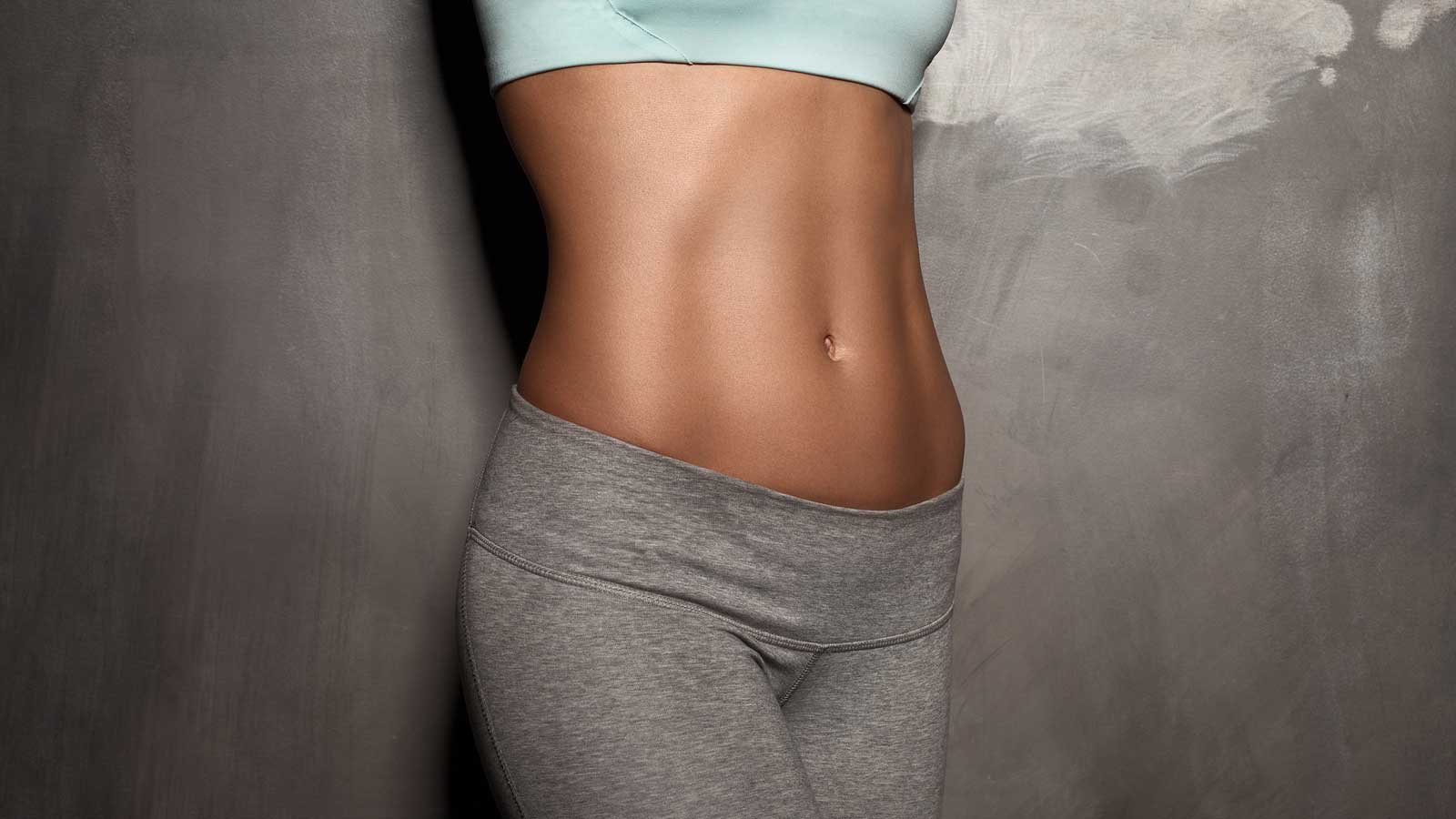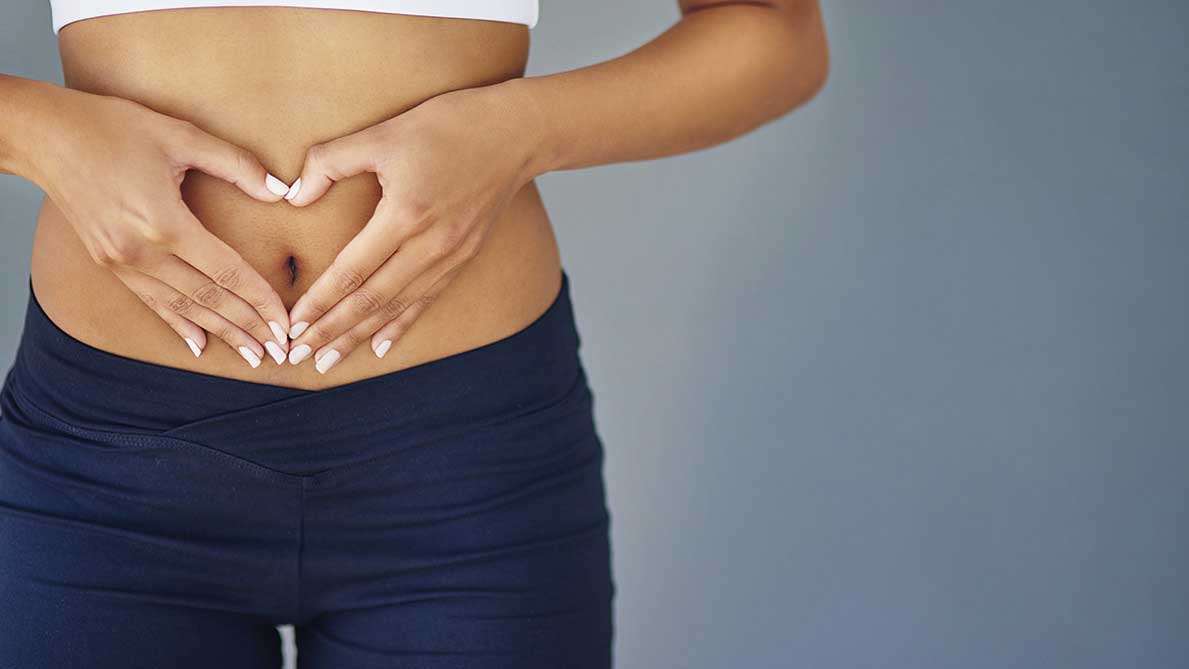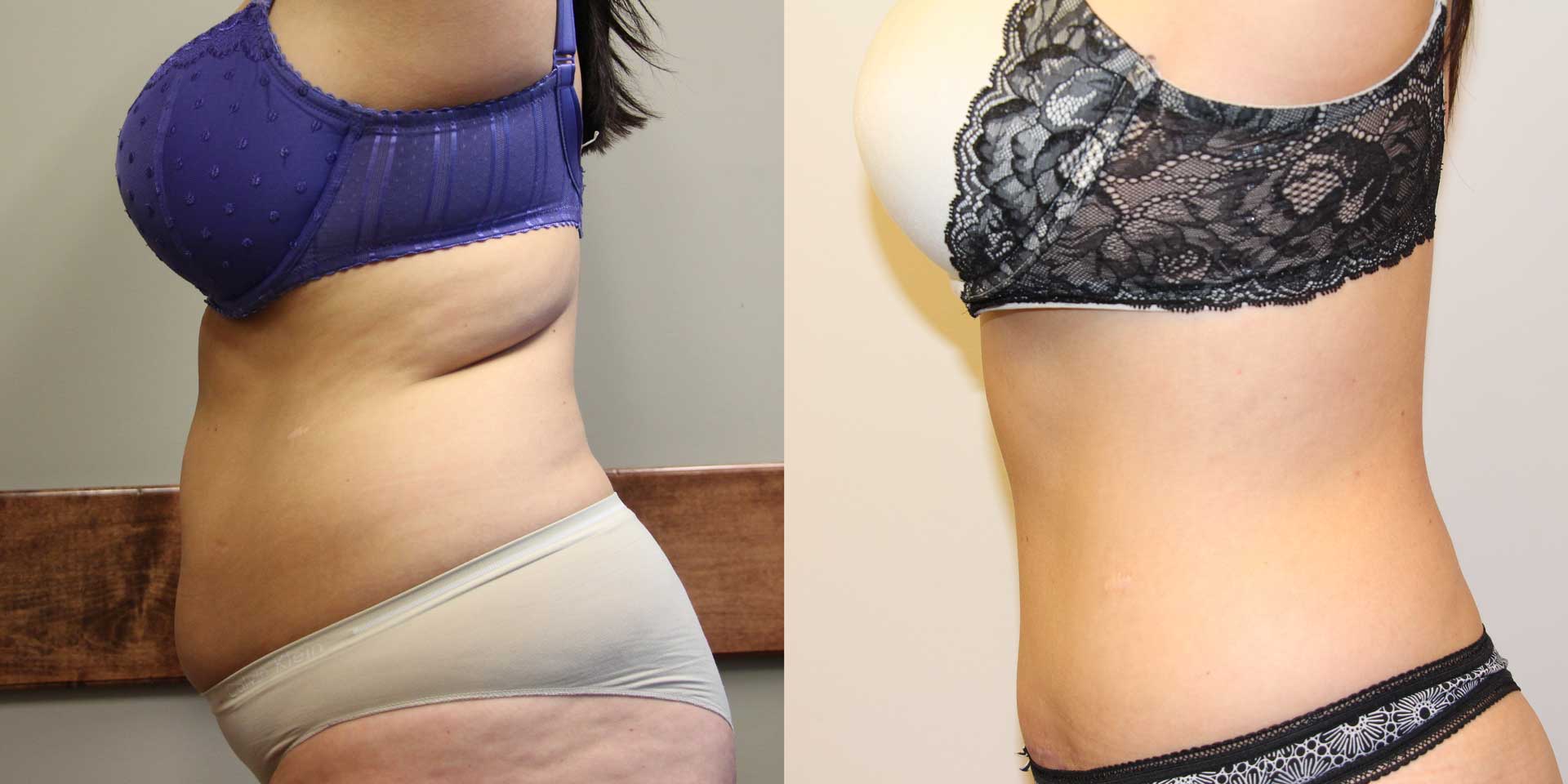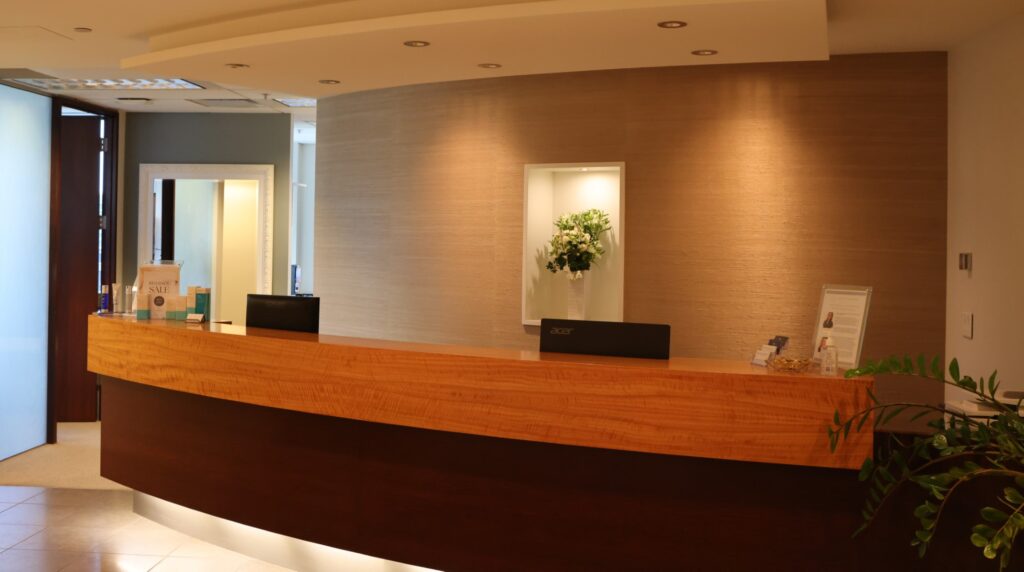A Tummy Tuck, also known as Abdominoplasty, is a cosmetic surgery procedure used to improve the shape of the tummy area (abdomen) by removing excess fat and loose skin. It can create a firmer profile by restoring weakened muscles.
If eating healthy and dieting have been unsuccessful, a Tummy Tuck in Vancouver may be an option for you. Even if you have a normal body weight, you may have a tummy that is sagging or loose. This may be due to pregnancy, aging, fluctuations in weight, and even heredity.
Is a Tummy Tuck for me?
A Tummy Tuck is not a substitute for proper exercise and a healthy diet, however, anybody with excess abdominal fat and skin may be a candidate. With women, pregnancy is a common cause of the problem, but is aggravated by weight loss. Men are affected similarly by weight loss.
The result of significant weight loss is unsightly stretch marks which are most obvious on the lower tummy area. These stretch marks can be made less obvious with the abdominal reduction procedure.
Large fluctuations in body weight can impact the results of a Tummy Tuck. If you are expecting significant weight loss or planning a pregnancy, you would be advised to delay a Tummy Tuck procedure.
You should have realistic expectations and you shouldn’t be doing it to fulfill anyone else’s desires of what an ideal image should be.
During your consultation, you may be asked to discuss your current medical condition, previous surgeries, medications you are currently taking, and your goals.
After you are evaluated, we will discuss your options and recommend a course of treatment, as well as discuss the risks and complications involving the procedure. You may also be asked to stop smoking or taking certain medications.

Tummy Tuck Procedure
Anesthesia is administered before surgery so you are comfortable during the procedure. The surgery is usually done under a general anesthetic.
The two types of Tummy Tucks are a Partial Tummy Tuck and a Full Tummy Tuck.
In a partial Tummy Tuck, a large incision is made across the lower abdomen, and the skin is separated from the abdominal wall. Excess fat and skin is cut away and the remaining skin is pulled together and stitched up.
In a full Tummy Tuck, an incision is made across the lower abdomen, and a second incision is made to free the belly button from the surrounding tissue. Excess skin and fat are then removed. A new opening is created for the belly button, and is stitched back into position.
The remaining skin is finally pulled down and stitched together.
Depending on the extent of the surgery and surgical techniques used, the operation could take up to three hours to complete.
If you are interested in a mini tummy tuck, please contact us to book a consultation.

Recovery After Tummy Tuck Surgery
If your Tummy Tuck is performed on an outpatient basis, arrange for someone to drive you home after recovering from surgery.
After your surgery, dressings may be applied to your incisions and an elastic bandage may be wrapped around the tummy to encourage your skin to heal properly around the affected area. You also will be given instructions on how to care for the surgical site.
Medication may be prescribed to help with the healing process and you will be told when to follow up with your doctor.
Ask your plastic surgeon questions about what you can expect during the recovery period.
Tummy Tuck Surgery Results
You may find that you might be unable to stand fully upright until healing is complete, however, this will improve over time. If you have had previous surgery in the abdominal area, it may limit the results of a Tummy Tuck.
Scars may take several months to improve in appearance and existing scars may be incorporated into new scars.
As with most cosmetic procedures, it may not always be possible to achieve optimal results with one visit, and another surgery is sometimes necessary in some cases.

Abdominoplasty Risks and Complications
A Tummy Tuck is an extremely personal decision and you will need to weigh the risks and benefits. To make sure you understand the risks involving the procedure, you will be asked to sign consent forms before the surgery.
Examples of the risks involving abdominoplasty include the following:
- Infection
- Skin loss and discoloration
- Deep vein thrombosis
- Asymmetry and scarring
- Persistent pain and poor wound healing
- Numbness
It’s important to address any questions that you may have concerning the procedure and these risks with your plastic surgeon.
Cost of a Tummy Tuck Procedure in Vancouver
The cost of a tummy tuck procedure depends on the type of procedure performed, as such, prices will vary.
The average cost for a tummy tuck is $13,000 CAD + GST.
Financing plans are offered.
Watch Dr. Anzarut’s Video on Tummy Tuck Surgery
Frequently Asked Questions (FAQ)
A Tummy Tuck, or Abdominoplasty, is a surgical procedure that removes excess skin and abdominal body fat from the abdomen. It tightens weakened abdominal muscles to create a firmer abdominal profile. At Dr Anzarut Plastic Surgery, we perform Tummy Tucks to help patients achieve a flatter stomach.
Good candidates are individuals in good health with excess abdominal skin or weakened muscles due to pregnancy, weight loss, or aging. At Dr Anzarut Plastic Surgery, we evaluate each patient to determine if a Tummy Tuck is suitable for their needs.
The procedure involves making an incision in the lower abdomen, removing excess skin and fat deposits, and tightening the abdominal muscles. It is performed under general anesthesia. At Dr Anzarut Plastic Surgery, we prioritize patient safety and comfort during the surgery.
Recovery typically takes about 6-8 weeks. Patients may experience swelling and should avoid strenuous activities. At Dr Anzarut Plastic Surgery, we provide detailed aftercare instructions to support your healing process.
Risks include infection, scarring (scar tissue), and anesthesia complications. At Dr Anzarut Plastic Surgery, we discuss all potential risks during the consultation and take steps to minimize them.
A Tummy Tuck can remove stretch marks located on the excess skin that is removed, usually below the belly button. Stretch marks outside this area may remain. We address this during your consultation at Dr Anzarut Plastic Surgery.
Yes, it can be combined with procedures like liposuction or breast surgery. This combination is often called a “Mommy Makeover.” At Dr Anzarut Plastic Surgery, we customize treatment plans to meet your goals.
The cost of a Tummy Tuck varies based on the extent of surgery and other factors. The average cost for a tummy tuck is about $13,000 CAD. At Dr Anzarut Plastic Surgery, we provide a detailed cost estimate during your consultation.
Typically, it’s considered a cosmetic procedure and not covered by insurance. In some cases, if there’s a medical necessity, partial coverage might be possible. We can discuss this at Dr Anzarut Plastic Surgery.
To schedule a consultation, contact Dr Anzarut Plastic Surgery by phone or through our website. We will discuss your goals and determine the best treatment plan for you.
Service Area Locations
Book a Consultation Today
Things to consider when choosing tummy tuck surgery (abdominoplasty)
Pre-Surgery Preparation
- Eligibility: Determine if you are a good candidate based on your health and goals.
- Weight Stability: Maintain a stable weight for 6-12 months before surgery.
- Pregnancy Plans: Delay surgery until after completing your family.
- Health Conditions: Address any chronic health issues, like diabetes or high blood pressure.
- Smoking: Quit smoking at least six weeks before surgery to enhance healing.
- Realistic Expectations: Understand the procedure’s limitations and outcomes.
- Surgeon Credentials: Choose a board-certified plastic surgeon with extensive experience.
- Consultation: Use the consultation to discuss your goals and ask detailed questions.
- Body Mass Index (BMI): A BMI below 30 is often recommended for better outcomes.
- Medical Clearance: Obtain clearance from your primary care doctor if required.
- Allergies: Disclose any allergies to medications or surgical materials.
- Family Support: Arrange for someone to assist you during recovery.
- Pre-Surgery Diet: Eat a nutrient-rich diet to prepare your body for healing.
- Exercise: Build a moderate fitness routine before surgery to improve recovery.
- Lab Tests: Complete all pre-operative blood tests and screenings.
- Medications: Avoid blood-thinning medications as instructed.
- Skin Condition: Address any skin issues like infections or rashes before surgery.
- Hydration: Stay well-hydrated in the days leading up to surgery.
- Photos: Take “before” photos to track progress and results.
- Childcare Needs: Arrange for help with children during recovery.
Types of Tummy Tucks
- Full Tummy Tuck: Involves removal of excess skin and fat, plus muscle tightening.
- Mini Tummy Tuck: Targets the area below the belly button with a smaller incision.
- Extended Tummy Tuck: Includes the flanks and lower back for comprehensive contouring.
- Fleur-de-Lis Tummy Tuck: Ideal for patients after massive weight loss.
- Drainless Tummy Tuck: Uses advanced techniques to avoid surgical drains.
Surgical Procedure
- Anesthesia: General anesthesia is typically used for tummy tuck surgery.
- Incision Placement: Discuss incision locations to minimize visible scarring.
- Muscle Repair: Many tummy tucks include repair of diastasis recti (separated abdominal muscles).
- Liposuction Add-On: Liposuction is often combined for improved contouring.
- Umbilicus Repositioning: The belly button is typically repositioned during a full tummy tuck.
- Duration: Surgery typically lasts 2-4 hours.
- Surgical Facility: Ensure the procedure is performed in an accredited facility.
- Emergency Protocols: Confirm the facility is equipped to handle complications.
- Drain Placement: Understand if surgical drains will be used and how to care for them.
- Suture Techniques: Ask about sutures designed to minimize scarring.
Post-Surgery Recovery
- Recovery Timeline: Initial recovery takes 2-4 weeks; full recovery may take 6-8 weeks.
- Pain Management: Discuss pain relief options, including medication.
- Swelling: Expect swelling that may last several months.
- Compression Garments: Wear these as instructed to reduce swelling and support healing.
- Drain Care: Learn how to manage surgical drains if used.
- Mobility: Plan to walk slightly bent over initially to protect incisions.
- Sleeping Position: Sleep with your upper body elevated for the first few weeks.
- Follow-Up Visits: Schedule and attend all post-surgery follow-ups.
- Bruising: Bruising is normal and will fade with time.
- Numbness: Temporary numbness around the incision area is common.
- Incision Care: Follow your surgeon’s instructions for cleaning and dressing wounds.
- Hydration: Continue to drink plenty of water to aid recovery.
- Dietary Restrictions: Avoid foods that may cause bloating or discomfort.
- Driving Restrictions: Avoid driving until you are off pain medications and can move comfortably.
- Activity Restrictions: Avoid heavy lifting or strenuous activities for at least 6 weeks.
Risks and Complications
- Infection: Minimize risk by following hygiene and wound care instructions.
- Blood Clots: Prevent clots by walking gently and wearing compression garments.
- Seroma: Fluid buildup may occur and require drainage.
- Hematoma: Blood pooling under the skin may need medical attention.
- Poor Healing: Smoking or poor health can delay recovery.
- Scarring: Scars will fade over time but may not disappear completely.
- Skin Necrosis: Rare cases involve tissue death near the incision site.
- Asymmetry: Some patients may require revision surgery for uneven results.
- Pain: Chronic pain in the surgical area is rare but possible.
- Allergic Reactions: Inform your surgeon of any allergies to reduce risk.
Long-Term Considerations
- Weight Maintenance: Stable weight is essential to preserve results.
- Pregnancy Impact: Future pregnancies can reverse tummy tuck results.
- Skin Elasticity: Results may vary based on your skin’s elasticity.
- Aging Effects: Aging will continue to affect your body.
- Longevity of Results: Results can last decades with proper care.
- Exercise Routine: Establish a moderate exercise plan to maintain results.
- Healthy Diet: Adopt a balanced diet for long-term benefits.
- Scar Management: Use silicone sheets or creams to minimize scarring.
- Sunscreen Use: Protect scars from sun exposure to prevent darkening.
- Post-Surgery Touch-Ups: Minor revisions may be needed over time.
Costs and Financial Considerations
- Average Cost: Tummy tucks typically cost $6,000 to $12,000 in North America.
- Insurance Coverage: Functional tummy tucks may be partially covered for medical reasons (e.g., hernia repair).
- Payment Plans: Many clinics offer financing options.
- Hidden Costs: Factor in costs for compression garments, medications, and follow-ups.
- Medical Loans: Research loan options if needed.
Lifestyle Adjustments
- Exercise Readiness: Return to physical activity only after surgeon approval.
- Hydration: Continue drinking plenty of water post-surgery.
- Skin Care: Use quality skin care products to enhance healing.
- Smoking Avoidance: Avoid smoking permanently to support overall health.
- Clothing Choices: Enjoy improved fit and comfort in clothing.
Emotional and Psychological Considerations
- Self-Confidence: Many patients report improved self-esteem post-surgery.
- Emotional Adjustment: Be prepared for emotional highs and lows during recovery.
- Body Image: Embrace your body changes with a realistic mindset.
- Support Groups: Join forums or groups to share experiences with others.
- Counseling: Consider counseling if you struggle with body image concerns.
Practical Considerations
- Recovery Space: Create a comfortable recovery area at home.
- Travel Arrangements: Plan for transportation to and from surgery.
- Work Leave: Arrange sufficient time off work for recovery.
- Household Help: Organize help with daily tasks during recovery.
- Pet Care: Arrange for assistance with pet care if needed.
Surgeon and Facility
- Surgeon’s Experience: Choose a surgeon with a strong track record in tummy tucks.
- Facility Accreditation: Ensure the surgical facility meets high safety standards.
- Before-and-After Photos: Review the surgeon’s portfolio for similar cases.
- Reputation: Read reviews and testimonials about the surgeon and facility.
- Comfort Level: Choose a surgeon you feel comfortable with.
Advanced Techniques
- Drainless Methods: Ask about drainless tummy tuck options for convenience.
- Combination Procedures: Consider combining a tummy tuck with other surgeries, like a mommy makeover.
- Laser-Assisted Liposuction: Explore options for skin tightening with less invasive techniques.
- 3D Imaging: Some clinics offer imaging tools to visualize results.
- Innovative Sutures: Research advanced suturing techniques for reduced scarring.
Benefits of Tummy Tuck surgery
Physical Appearance
- Flatter Abdomen: Removes excess fat and skin for a flatter stomach.
- Improved Contour: Enhances body proportions and symmetry.
- Tighter Skin: Restores skin elasticity, reducing sagging.
- Stretch Mark Reduction: Eliminates or improves stretch marks below the belly button.
- Defined Waistline: Creates a more sculpted waistline.
- Youthful Look: Gives a rejuvenated and youthful body appearance.
- Improved Clothing Fit: Makes clothes fit better and look more flattering.
- Swimwear Confidence: Boosts confidence in swimsuits and summer attire.
- Reduced Bulges: Eliminates stubborn fat bulges resistant to diet and exercise.
- Toned Appearance: Creates a smoother, more athletic look.
Post-Pregnancy Benefits
- Restores Pre-Pregnancy Body: Reverses many physical effects of pregnancy.
- Corrects Separated Muscles: Repairs diastasis recti (abdominal muscle separation).
- Improved Skin Texture: Addresses stretched or loose skin caused by pregnancy.
- Enhanced Belly Button Appearance: Repositions and reshapes the navel.
- Confidence Boost for Mothers: Helps mothers feel like themselves again.
Post-Weight Loss Benefits
- Excess Skin Removal: Eliminates loose skin after significant weight loss.
- Reduced Skin Irritation: Prevents rashes or infections caused by excess skin folds.
- Improved Mobility: Eases movement by removing cumbersome extra skin.
- Enhanced Body Proportions: Restores balance to the body after weight loss.
- Supports Long-Term Weight Maintenance: Encourages patients to maintain a healthy weight.
Health Benefits
- Better Posture: Strengthened abdominal muscles support improved posture.
- Back Pain Relief: Reduced strain on the lower back due to stronger core muscles.
- Hernia Repair: Often corrects ventral or umbilical hernias during the procedure.
- Improved Core Strength: Tightened abdominal muscles enhance core stability.
- Prevents Skin Infections: Reduces skin irritation and infections in skin folds.
- Reduced Urinary Incontinence: Can alleviate stress urinary incontinence in some cases.
- Improved Digestive Comfort: Relieves discomfort from abdominal muscle separation.
- Improved Breathing: Enhanced core strength may aid respiratory function.
- Supports Physical Activity: Easier to exercise and engage in physical activities post-surgery.
- Reduced Risk of Health Issues: May lower risks associated with obesity and excess abdominal fat.
Psychological Benefits
- Boosted Self-Confidence: Many patients report feeling more confident in their appearance.
- Enhanced Body Image: Helps patients feel more positive about their bodies.
- Improved Mental Health: Reduces feelings of inadequacy or self-consciousness.
- Motivation for Healthy Living: Encourages a healthier lifestyle and better self-care.
- Reduced Postpartum Depression: Helps some mothers recover emotionally post-pregnancy.
- Empowerment: Gives patients a sense of control over their appearance.
- Stress Reduction: Relieves stress related to body insecurities.
- Social Confidence: Encourages participation in social and recreational activities.
- Improved Relationship Dynamics: Many patients report increased intimacy and connection with partners.
- Sense of Achievement: A rewarding culmination of fitness or weight loss journeys.
Clothing and Wardrobe
- Freedom in Fashion Choices: Enables wearing a wider variety of clothing styles.
- Better Fit: Clothing, especially fitted items, looks and feels better.
- Confidence in Dresses: Patients feel more confident wearing form-fitting dresses.
- Improved Fit for Underwear: Reduces the discomfort of ill-fitting undergarments.
- Swimsuit Options: Greater confidence in bikinis and other swimwear styles.
- No Need for Shapewear: Eliminates reliance on shapewear for a smooth look.
- Comfort in Activewear: Makes workout clothes more flattering and comfortable.
- Better Proportions: Allows patients to enjoy a more balanced silhouette in clothing.
- Rediscovering Style: Helps patients explore and embrace new fashion trends.
- Elimination of Bulges: Removes bulges that disrupt the fit of clothing.
Lifestyle Enhancements
- Ease of Exercise: More comfortable to engage in fitness routines.
- Improved Mobility: Frees up movement by removing heavy, sagging skin.
- Increased Energy: Feeling lighter and stronger often leads to more energy.
- Posture Awareness: Improved posture leads to better ergonomics in daily activities.
- Greater Comfort: Reduced discomfort from hanging skin or excess fat.
Long-Term Benefits
- Permanent Fat Removal: Liposuction during a tummy tuck permanently removes fat cells.
- Durable Results: Results can last decades with proper care and weight maintenance.
- Scar Fading: Scars fade over time and are strategically placed to be easily hidden.
- Motivation for Weight Stability: Encourages patients to maintain a stable weight.
- Reduced Stretching Risk: Tightened muscles and skin are less likely to re-stretch.
Medical Insights
- Addresses Functional Concerns: Combines cosmetic and medical benefits, such as hernia repair.
- Prevents Worsening Conditions: Repairs issues like muscle separation before they become severe.
- Improves Skin Quality: Removes damaged skin, leaving smoother, healthier tissue.
- Improves Circulation: Eliminates compressed areas caused by skin folds.
- Corrects Umbilical Issues: Enhances the shape and positioning of the belly button.
For Mothers
- Postpartum Recovery: Restores the body after multiple pregnancies.
- Confidence in Motherhood: Helps mothers feel like themselves again.
- Better Support for Activities: Core strengthening aids in lifting and caring for children.
- Enhanced Mobility: Removes obstacles to physical play and activities with children.
- Improved Mental Wellness: Helps mothers focus on self-care and emotional well-being.
Appearance-Related
- Balanced Silhouette: Enhances the overall appearance of the torso.
- No More Muffin Top: Removes excess fat and skin that spills over clothing.
- Smoother Lines: Eliminates irregularities in body contour.
- Better Side Profile: Improves how the abdomen looks from the side.
- Improved Proportions: Creates a harmonious balance with the rest of the body.
Aging Benefits
- Slows Aging Appearance: Tightened skin creates a more youthful look.
- Improved Skin Tone: Removes sagging and damaged skin, enhancing overall tone.
- Support Against Gravity: Tightened muscles resist future sagging.
- Less Visible Wrinkling: Smoother skin reduces the appearance of abdominal wrinkles.
- Confidence in Aging Gracefully: Helps patients embrace their bodies as they age.
Post-Surgery Benefits
- Improved Health Monitoring: Easier to detect changes or health concerns in the abdomen.
- No More Irritation: Eliminates skin chafing caused by overhanging folds.
- Comfortable Sitting: Reduces discomfort from excess skin while seated.
- Belly Button Enhancement: Many patients report satisfaction with a natural-looking belly button.
- Freedom from Shapewear: Reduces the need for constrictive garments.
Social and Emotional Well-Being
- Improved Social Interactions: Patients feel more comfortable in social settings.
- Increased Happiness: Many patients report improved quality of life.
- Confidence in Photos: Greater comfort with taking pictures and sharing memories.
- Motivation for Personal Growth: Boosts interest in self-improvement and personal goals.
- Self-Love: Helps patients reconnect with and appreciate their bodies.
Lifestyle and Activity
- Enhanced Physical Comfort: Eliminates discomfort caused by excess skin.
- Ease in Traveling: Reduces bulk for more comfortable travel experiences.
- Improved Athletic Performance: A stronger core supports better performance in sports.
- Comfort in Everyday Tasks: Improves ergonomics in household and work activities.
- Freedom in Movement: Removes restrictions caused by loose skin.
Aesthetic Appeal
- Proportional Torso: Enhances balance between the upper and lower body.
- Improved Side View: Creates a sleeker and more elegant profile.
- Symmetry: Corrects asymmetry in abdominal appearance.
- Minimal Scarring: Scars are strategically placed and fade over time.
- Personal Satisfaction: Many patients report feeling fulfilled and happy with their decision.
Tummy tuck facts and statistics
General Facts
- Definition: A tummy tuck is a cosmetic surgical procedure to remove excess skin and fat from the abdomen and tighten abdominal muscles.
- Popularity: Tummy tucks are one of the top five most popular cosmetic surgeries worldwide.
- Gender: While primarily requested by women, men account for about 10% of tummy tuck procedures.
- Combination Surgery: Tummy tucks are often combined with liposuction, breast augmentation, or mommy makeovers.
- Post-Pregnancy Demand: A large percentage of tummy tuck patients are mothers looking to restore their pre-pregnancy bodies.
Statistics on Popularity
- US Demand: Over 120,000 tummy tuck procedures are performed annually in the United States.
- Global Appeal: Countries like Brazil, the US, and South Korea lead in abdominoplasty procedures.
- Age Group: Most patients are between 30 and 50 years old.
- Post-Weight Loss: Tummy tucks are highly sought after by individuals who have experienced significant weight loss.
- Repeat Procedures: About 15% of patients return for revision surgery.
Types of Tummy Tucks
- Full Tummy Tuck: This is the most common type, addressing the entire abdomen and tightening muscles.
- Mini Tummy Tuck: Focuses on the lower abdomen with a smaller incision and shorter recovery time.
- Extended Tummy Tuck: Removes excess skin from the abdomen, flanks, and lower back.
- Fleur-de-Lis Tummy Tuck: Designed for massive weight loss patients, it includes vertical and horizontal incisions.
- Drainless Tummy Tuck: Uses advanced suturing techniques to eliminate the need for post-op drains.
Health and Candidacy
- Ideal Candidates: Include those at a stable weight, non-smokers, and individuals in good overall health.
- BMI Recommendations: Surgeons prefer patients with a BMI below 30 for optimal results.
- Pregnancy Considerations: Patients are advised to wait until after completing their family.
- Muscle Repair: Diastasis recti (separated abdominal muscles) is commonly corrected during surgery.
- Stretch Marks: Tummy tucks can remove or improve the appearance of stretch marks below the navel.
Surgical Details
- Duration: Surgery typically lasts 2-4 hours, depending on the complexity.
- Anesthesia: General anesthesia is used for tummy tuck procedures.
- Incision Length: Incisions vary based on the type of tummy tuck, usually hidden along the bikini line.
- Liposuction Add-On: Over 60% of tummy tucks include liposuction for better contouring.
- Umbilicus Repositioning: The belly button is often reshaped or repositioned during surgery.
Recovery
- Initial Downtime: Patients usually need 2-4 weeks off work for recovery.
- Full Recovery: Complete healing can take up to 6-12 months.
- Compression Garments: Must be worn for 4-8 weeks to reduce swelling and support healing.
- Walking Bent Over: Patients may need to walk slightly bent for the first week to avoid tension on incisions.
- Exercise Restrictions: Strenuous activity should be avoided for at least 6 weeks.
Costs
- Average Cost: In North America, tummy tucks typically cost between $6,000 and $12,000.
- Financing Options: Many clinics offer payment plans or financing.
- Insurance Coverage: Rarely covered unless performed for medical reasons, such as hernia repair.
- Hidden Costs: Include medications, compression garments, and follow-up visits.
- Global Pricing: Costs vary significantly by region, with medical tourism options in countries like Mexico and Thailand.
Risks and Complications
- Infection: Occurs in less than 5% of cases but requires prompt treatment.
- Seroma: Fluid buildup is the most common complication, affecting up to 15% of patients.
- Hematoma: Blood pooling under the skin occurs in about 1-2% of cases.
- Scarring: Tummy tuck scars are permanent but fade significantly over time.
- Skin Necrosis: Rarely, tissue death near the incision may occur.
Satisfaction and Results
- High Satisfaction Rates: Over 95% of patients report satisfaction with their tummy tuck results.
- Confidence Boost: Most patients experience improved self-esteem and body image.
- Long-Lasting Results: Results can last decades with proper weight maintenance.
- Body Proportions: Patients report better overall body balance and proportions.
- Scar Placement: Scars are typically hidden by underwear or swimwear.
Innovations
- Drainless Techniques: Reduce discomfort and recovery time.
- Laser-Assisted Liposuction: Enhances results with less invasive fat removal.
- High-Definition Tummy Tucks: Focus on creating a more sculpted, athletic appearance.
- 3D Imaging: Used to visualize potential results during consultations.
- Combination Procedures: Often paired with mommy makeovers for comprehensive body contouring.
Demographics
- Age Range: The average patient age is between 30 and 50.
- Weight Loss Patients: Many tummy tuck patients have undergone bariatric surgery.
- Men’s Interest: Male patients often seek tummy tucks after weight loss.
- Urban Areas: Higher demand in metropolitan areas due to greater awareness.
- Cultural Trends: Preferences vary globally, with some regions prioritizing more dramatic results.
Lifestyle Changes
- Dietary Adjustments: A balanced diet is crucial for maintaining results.
- Exercise Habits: Regular exercise helps prolong the effects of surgery.
- Smoking Cessation: Smoking significantly increases the risk of complications.
- Hydration: Staying hydrated aids recovery and maintains skin elasticity.
- Sun Protection: Protect scars with sunscreen to prevent darkening.
Psychological Impact
- Emotional Readiness: Patients should be emotionally prepared for the recovery process.
- Self-Esteem: Many patients report improved confidence in social and professional settings.
- Body Image Issues: Some patients seek counseling to address lingering insecurities.
- Support Groups: Online forums offer advice and shared experiences.
- Post-Surgery Depression: Temporary emotional lows are common during recovery.
Medical Benefits
- Hernia Repair: Abdominoplasty can include correction of ventral or umbilical hernias.
- Back Pain Relief: Improved core strength may reduce lower back pain.
- Posture Improvement: Tightened abdominal muscles enhance posture.
- Rash Prevention: Eliminating excess skin reduces skin irritation and infections.
- Improved Mobility: Many patients report easier movement after removing excess skin.
Global Trends
- Medical Tourism: Popular destinations include Mexico, Turkey, and Brazil for cost savings.
- Rising Demand: Tummy tuck procedures have increased by over 30% in the past decade.
- Technological Advancements: Innovations like VASER and laser-assisted techniques are growing.
- Non-Surgical Alternatives: Treatments like CoolSculpting and Emsculpt appeal to non-surgical candidates.
- Patient Education: Social media and online platforms drive awareness and interest.
Post-Surgery Care
- Follow-Up Appointments: Essential for monitoring healing progress.
- Compression Garments: Reduce swelling and help contour the body.
- Scar Treatment: Products like silicone sheets minimize scar appearance.
- Pain Management: Most patients report manageable pain with prescribed medication.
- Wound Care: Proper hygiene prevents infections and promotes healing.
Cost Factors
- Procedure Complexity: Costs rise with the inclusion of liposuction or extended tummy tucks.
- Surgeon’s Experience: Highly experienced surgeons charge higher fees.
- Location: Costs vary based on geographic region.
- Facility Fees: Accredited surgical centers may have higher fees but better safety standards.
- Additional Costs: Include anesthesia, medications, and follow-up care.
Results Maintenance
- Weight Stability: Significant weight changes can compromise results.
- Fitness Goals: Many patients feel motivated to maintain a healthier lifestyle.
- Healthy Aging: Results may shift with natural aging but remain noticeable.
- Pregnancy Effects: Future pregnancies can reverse some benefits.
- Skin Elasticity: Plays a role in the longevity of results.
Patient Experiences
- Confidence in Swimwear: A common post-surgery milestone for patients.
- Clothing Fit: Many report better-fitting clothing and improved wardrobe options.
- Partner Support: Emotional and practical support from partners enhances recovery.
- Peer Influence: Friends and family recommendations often influence decisions.
- Surgeon Reviews: Positive reviews and testimonials boost patient confidence.
Surgeon Selection
- Board Certification: Ensure the surgeon is certified by a recognized board.
- Before-and-After Photos: Review results of similar cases.
- Patient Safety: Choose a surgeon with a strong track record in safety and outcomes.
- Consultation Process: A thorough consultation sets realistic expectations.
- Facility Accreditation: Verify the surgical facility meets high safety standards.

